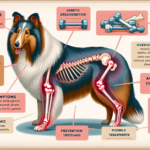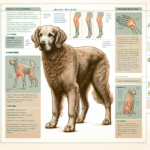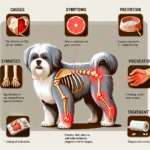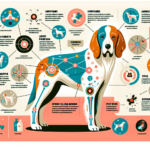West Highland White Terrier Joint Pain: Causes, Symptoms, Prevention, and Treatment
Introduction
The West Highland White Terrier, affectionately known as the “Westie,” is a small, sturdy breed with a rich history and a distinctive appearance. Originating from Scotland, the Westie was initially bred for hunting small game such as rodents and foxes. This breed is characterized by its white, double-layered coat, erect ears, and a lively, inquisitive personality. Westies are known for their intelligence, independence, and affectionate nature, making them popular companions worldwide.
Like many purebred dogs, Westies are prone to certain health issues. Common concerns include skin allergies, dental problems, and, notably, joint pain. Joint health is particularly crucial for Westies due to their active nature and genetic predispositions. Ensuring good joint health can significantly enhance their quality of life and longevity.
Breed-Specific Joint Pain Risks
Genetic Predisposition
West Highland White Terriers are genetically predisposed to several joint-related issues. Hip dysplasia, a condition where the hip joint doesn’t fit properly into the hip socket, is relatively common in this breed. This misalignment can lead to arthritis and significant pain over time. Elbow dysplasia, another genetic condition, affects the elbow joint and can cause similar issues. Additionally, Westies are prone to patellar luxation, where the kneecap dislocates from its normal position, leading to pain and mobility issues.
Age-Related Risks
As Westies age, the risk of developing joint pain increases. Degenerative joint diseases like osteoarthritis are more likely to occur in older dogs. For Westies, significant age milestones to watch for include the transition from adulthood (around 7 years) to senior status (around 10 years). During these stages, regular veterinary check-ups become increasingly important to monitor joint health.
Activity Level and Joint Stress
Westies are known for their high energy levels and love for physical activities such as running, playing, and digging. While regular exercise is essential for their overall health, excessive or high-impact activities can put undue stress on their joints. Activities like jumping from heights or running on hard surfaces can exacerbate joint issues, especially if the dog is genetically predisposed to them.
Common Symptoms of Joint Pain in West Highland White Terriers
General Symptoms
- Limping: One of the most noticeable signs of joint pain is limping or favoring one leg over another.
- Stiffness: Stiffness, especially after rest or sleep, can indicate joint discomfort.
- Reluctance to Move: A dog that is hesitant to climb stairs, jump, or engage in physical activities may be experiencing joint pain.
- Swelling: Visible swelling around the joints can be a sign of inflammation and pain.
- Behavioral Changes: Increased irritability or changes in behavior can also be indicative of pain.
Breed-Specific Symptoms
In Westies, joint pain may manifest in specific ways due to their size and build. For instance, you might notice a Westie having difficulty with activities that involve jumping or climbing, such as getting onto furniture or into a car. Additionally, Westies may show signs of discomfort when being picked up or handled around the joints.
When to Consult a Vet
If you observe any of the above symptoms in your Westie, it’s crucial to consult a veterinarian promptly. Early diagnosis and intervention can prevent the progression of joint issues and improve your dog’s quality of life. Regular veterinary check-ups are also essential for monitoring joint health, especially as your Westie ages.
Preventive Measures for Joint Health
Exercise Recommendations
Regular, moderate exercise is key to maintaining joint health in Westies. Activities such as walking, swimming, and gentle play are excellent options. Avoid high-impact exercises like jumping or running on hard surfaces. Instead, opt for soft ground or grass to minimize joint stress. Consistent, low-impact exercise helps maintain muscle strength and joint flexibility.
Dietary Suggestions
A balanced diet rich in essential nutrients can support joint health. Consider incorporating foods or supplements that contain glucosamine, chondroitin, and omega-3 fatty acids, which are known to promote joint health. High-quality commercial dog foods often include these nutrients, but consult your veterinarian for specific dietary recommendations tailored to your Westie’s needs.
Weight Management
Maintaining a healthy weight is crucial for reducing joint stress. Excess weight can exacerbate joint issues and lead to more severe pain. Monitor your Westie’s weight regularly and adjust their diet and exercise routine as needed. Your veterinarian can provide guidance on the ideal weight range for your dog and offer tips for weight management.
Early Screening and Monitoring
Early screening for joint issues can help catch problems before they become severe. Regular veterinary check-ups should include joint assessments, especially as your Westie ages. X-rays and other diagnostic tools can help identify joint abnormalities early on. Additionally, genetic testing can provide insights into your dog’s predisposition to certain joint conditions.
Treatment Options for Joint Pain
Non-Surgical Treatments
Non-surgical treatments are often the first line of defense against joint pain. These may include:
- Medications: Anti-inflammatory drugs and pain relievers can help manage symptoms.
- Physical Therapy: Specialized exercises and therapies can improve joint function and reduce pain.
- Lifestyle Adjustments: Modifying your dog’s activity level and environment can alleviate joint stress.
Surgical Options
If non-surgical treatments are ineffective, surgical interventions may be necessary. Common surgical options for joint pain in Westies include:
- Hip Replacement: This procedure involves replacing the damaged hip joint with an artificial one.
- Arthroscopy: A minimally invasive surgery used to diagnose and treat joint issues.
- Osteotomy: Surgical cutting of bone to realign the joint and reduce pain.
Surgical options should be discussed thoroughly with your veterinarian to determine the best course of action for your dog.
Alternative Therapies
Alternative therapies can complement traditional treatments and provide additional relief. Some options include:
- Acupuncture: This ancient practice can help reduce pain and inflammation.
- Hydrotherapy: Water-based exercises that reduce joint stress while improving mobility.
- Massage: Therapeutic massage can alleviate muscle tension and improve circulation.
Consult with a veterinarian experienced in alternative therapies to explore these options for your Westie.
Lifestyle and Management Tips
Daily Care Routine
A consistent daily care routine can help manage and alleviate joint pain in Westies. This routine might include:
- Regular Exercise: Engage in low-impact activities like walking or swimming.
- Balanced Diet: Provide a diet rich in joint-supporting nutrients.
- Weight Monitoring: Keep track of your dog’s weight and adjust their diet as needed.
- Joint Supplements: Incorporate supplements like glucosamine and omega-3 fatty acids.
Modifying the Home Environment
Making your home more comfortable for a dog with joint pain can significantly improve their quality of life. Consider the following modifications:
- Ramps: Use ramps to help your dog access furniture or climb stairs.
- Orthopedic Beds: Provide a supportive bed to reduce pressure on joints.
- Non-Slip Flooring: Ensure floors are non-slip to prevent falls and injuries.
Long-Term Management
Long-term management strategies are essential for keeping your Westie active and happy despite joint pain. These strategies might include:
- Regular Vet Visits: Schedule regular check-ups to monitor joint health and adjust treatments as needed.
- Consistent Routine: Maintain a consistent exercise and care routine to support joint health.
- Monitoring Symptoms: Keep an eye on symptoms and consult your vet if they worsen.
FAQs About West Highland White Terriers and Joint Pain
What are the early signs of joint pain in Westies?
Early signs of joint pain in Westies include limping, stiffness, reluctance to move, and behavioral changes such as irritability.
Can joint pain in Westies be prevented?
While genetic predispositions cannot be entirely prevented, maintaining a healthy weight, providing a balanced diet, and ensuring regular, low-impact exercise can help reduce the risk of joint pain.
Are there specific foods that can help with joint health?
Yes, foods rich in glucosamine, chondroitin, and omega-3 fatty acids can support joint health. Consult your veterinarian for specific dietary recommendations.
When should I consult a vet about my Westie’s joint pain?
If you notice any signs of joint pain, such as limping, stiffness, or reluctance to move, consult your veterinarian promptly. Early intervention can prevent the progression of joint issues.
What are the best exercises for a Westie with joint pain?
Low-impact exercises like walking and swimming are ideal for Westies with joint pain. Avoid high-impact activities that can exacerbate joint stress.
Conclusion
Joint pain is a common concern for West Highland White Terriers, but with proper care and attention, it can be managed effectively. By understanding the breed-specific risks, recognizing early symptoms, and implementing preventive measures, you can help ensure your Westie enjoys a healthy, active life. Regular veterinary check-ups, a balanced diet, and appropriate exercise are key components of maintaining joint health. If joint pain does occur, a range of treatment options, from non-surgical therapies to surgical interventions, can provide relief. Always consult your veterinarian for personalized advice and treatment plans tailored to your dog’s needs.
By taking proactive steps and staying informed, you can help your Westie live a comfortable and happy life, free from the debilitating effects of joint pain.




